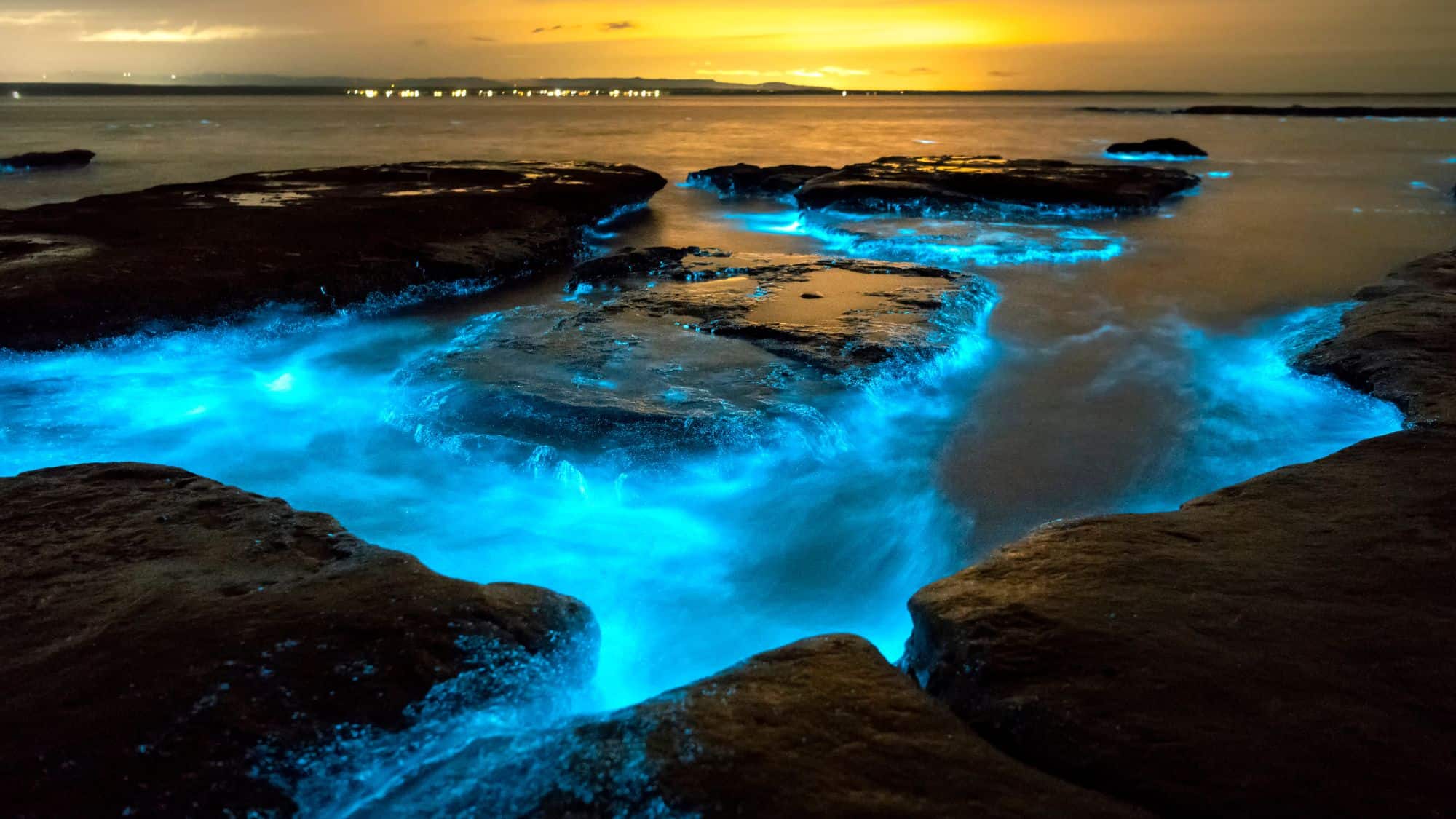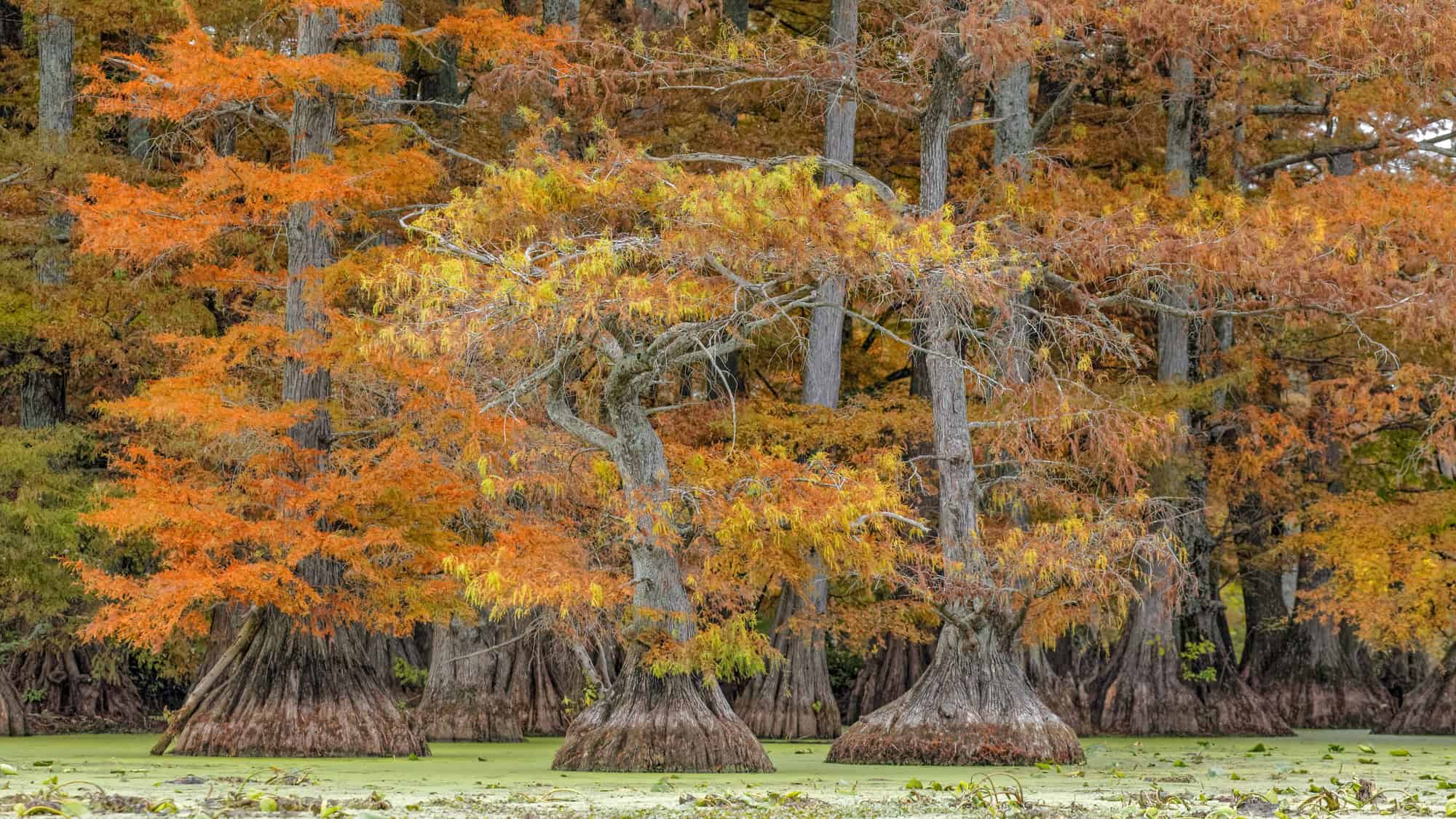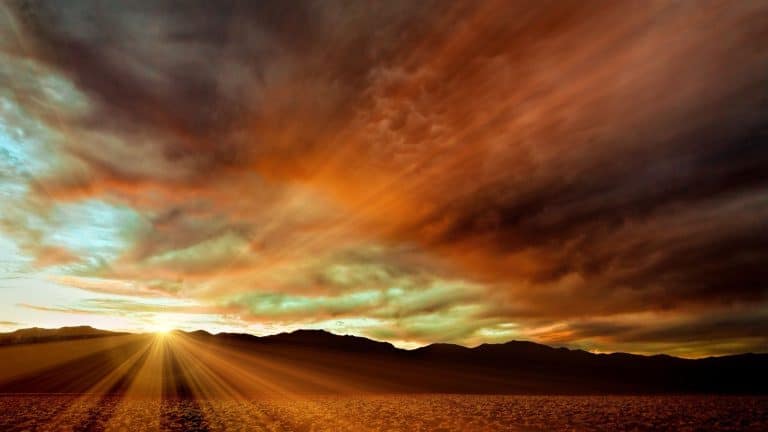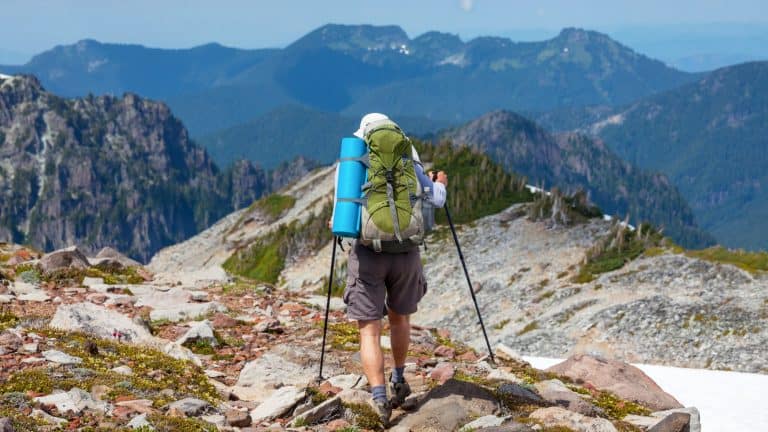Discover Parks & Wildlife contains affiliate links and is a member of the Amazon Services LLC Associates Program. If you make a purchase using one of the Amazon links, we may receive compensation at no extra cost to you. We may also use select AI tools to support our creative process, but all content is reviewed, refined, and finalized by our human team. See our disclosure policy and our AI use policy for more information.
13 Most Inhospitable Tourist Spots That Challenge Even the Bold
Some places don’t just ask for your attention. They dare you to show up. These are the corners of the Earth that laugh in the face of comfort, where sunscreen, Wi-Fi, and breathable air are more fantasy than reality.
Yet, there’s something magnetic about destinations that test your limits. Maybe it’s the thrill of being where few humans dare to linger, or maybe it’s the bragging rights of saying, “Yes, I survived that.”
From scorching deserts to frozen wastelands, these spots seem determined to send visitors running back to room service and climate control. But if adventure had a scent, it would probably smell like sulfur, salt, or a touch of regret.
So pack your grit and maybe a backup water filter, because these are not your weekend getaway type of places. They’re reminders that the planet isn’t always picture-perfect. And that’s exactly what makes them unforgettable.
Aral Sea, Kazakhstan & Uzbekistan

Once a massive inland sea, the Aral has all but disappeared, shrinking by more than 90 percent since the 1960s. What’s left is a surreal wasteland of salt-crusted earth and rusting ships marooned miles from any water.
Locals now live amid a toxic mix of salt storms and chemical residues from decades of agricultural runoff. The air can sting your throat, and summer temperatures easily hit 113°F. Yet, oddly enough, the desolation draws visitors. Travelers come to see the ghostly ship graveyards in Moynaq, where fishing boats rest on dry sand, silent reminders of vanished livelihoods.
You’ll also find scientists studying the rebirth of a smaller, partially restored northern section. Still, comfort here is minimal. Expect dust in every crevice of your gear and the kind of silence that makes you question if the wind’s playing tricks. It’s hauntingly beautiful in that “the Earth is moving on without us” sort of way.
Danakil Depression, Ethiopia

Welcome to the place where thermometers sigh in defeat. The Danakil Depression, one of the hottest spots on the planet, regularly exceeds 120°F. And the ground looks borrowed from another planet. Pools of neon green acid bubble beside sulfur vents, while salt flats stretch into a shimmering mirage.
You’ll find Afar salt miners carving blocks from the crust in brutal heat, their camel caravans trudging across terrain that feels alive with steam and sulfur. Scientists study the region because it mimics conditions on Mars, but you’ll be more concerned about keeping your shoes from melting.
Lodging is primitive. Picture sleeping under stars that feel close enough to burn your eyelashes. Yet, there’s an odd pull to this place. Maybe it’s the riot of colors that don’t seem natural, or maybe it’s the satisfaction of standing somewhere that looks completely uninhabitable but isn’t. Either way, it’s as breathtaking as it is punishing.
Death Valley, California

This isn’t just the hottest place in North America; it’s a test of human stubbornness. Summer temperatures often climb beyond 125°F, and even your camera might beg for mercy. The salt flats of Badwater Basin sit 282 feet below sea level, and the air feels heavy, almost sticky, with heat.
The land rolls in waves of gold, beige, and bronze, interrupted by jagged canyons that seem to shimmer. And rangers constantly warn visitors about dehydration, yet people still wander out for selfies (apparently, a photo next to a warning sign is worth heatstroke).
Despite its deadly name, Death Valley is strangely alive. Pupfish swim in isolated pools, and wildflowers burst into color after rare rainfalls. Nighttime reveals skies so star-filled they look fake. It’s the kind of beauty that humbles you, reminding you that comfort and wonder rarely coexist. Just remember to bring triple the water you think you’ll need.
Iquitos, Peru

Iquitos sits deep in the Peruvian Amazon, reachable only by plane or boat. No roads lead in or out. The humidity feels like stepping into a sauna you didn’t sign up for, and the air hums with insects you’ve never met before.
Yet the city bursts with color and life. Colonial buildings line the streets, mototaxis buzz everywhere, and the Belen Market offers everything from medicinal herbs to fried piranha. Venture beyond the city, and you’ll find jungle lodges surrounded by thick rainforest.
Here, rainstorms arrive without warning, and the nights echo with animal calls so loud you’ll check twice that your windows are closed. It’s remote, yes, but also magnetic. Scientists and adventurers flock here for access to one of the most biodiverse regions on Earth. Just pack bug spray strong enough to double as armor.
Antarctica

There’s cold, and then there’s “your eyelashes froze together” cold. Antarctica doesn’t do half-measures. Even in summer, coastal temperatures hover around 20°F, while the interior plunges below -70°F. The winds can reach hurricane speeds, and storms appear faster than your weather app can update.
No towns, no ATMs, no casual strolls to grab a snack. Yet, it’s mesmerizing and certainly a place we can’t wait to get to. The ice stretches for millions of square miles, sculpted into peaks and shelves that glint like glass. Penguins waddle through blizzards, somehow immune to the temperatures.
Scientists live in temporary stations, while visitors on expedition cruises brave unpredictable seas just to step on the continent. But you’ll find silence so deep it hums. And it’s easy to forget the rest of the world exists here… until your fingers remind you they can’t feel anything.
Chornobyl Exclusion Zone, Ukraine

If eerie had a capital city, this would be it. The Chornobyl Exclusion Zone covers roughly 1,000 square miles of abandoned villages and forests slowly swallowing them back. Pripyat’s empty ferris wheel, frozen mid-spin since 1986, still stands as an unsettling monument.
For years, guided tours allowed visitors to explore certain areas safely, each carrying a dosimeter and with strict time limits. But since the start of the war in Ukraine, those tours have been suspended, leaving the zone once again closed to the public.
Nature continues to reclaim what was lost: wild horses, wolves, and boars now roam freely where people once lived. And the quiet here feels wrong, too deep, too still. Streets are lined with murals faded by time, and schools sit frozen mid-lesson. It’s haunting and strangely peaceful all at once.
Many hope that one day, visitors will return to see how the Earth heals even after catastrophe, But for now, Chornobyl remains a ghost wrapped in silence.
Atacama Desert, Chile

If Mars had an address on Earth, this would be it. The Atacama Desert, stretching over 600 miles along northern Chile, is one of the driest places on the planet. Some areas haven’t seen measurable rain for centuries.
The cracked earth glows orange and red under the relentless sun, and the air is so clear that NASA tests Mars rovers here. Yet, amid the desolation, life surprises you. Pink flamingos feed in salt lagoons, and the night skies are so bright they redefine what “stargazing” means. Temperatures swing from 100°F by day to freezing at night.
Towns like San Pedro de Atacama offer a base with minimal comforts. Think rustic, not resort. But watching the sun rise over Valle de la Luna feels worth every hardship to get here. The Atacama doesn’t pretend to be friendly, but it sure knows how to impress.
Mount Everest, Nepal & China

Everest may look majestic in photos, but it’s also a freezer stocked with oxygen tanks and questionable decisions. At 29,032 feet, it’s the world’s highest peak, and temperatures can drop below -40°F. Even reaching Base Camp requires stamina, patience, and a healthy respect for altitude sickness.
The mountain’s “death zone” begins above 26,000 feet, where oxygen levels are too low for prolonged survival. Yet, hundreds attempt the climb each year, crowding narrow paths lined with ropes, ladders, and frozen reminders of what’s at stake.
Sherpa guides carry unimaginable loads, and storms can erase visibility in minutes. Still, Everest keeps calling. And people still go, maybe out of pride, or maybe the irresistible human urge to stand where so few have. It’s dangerous, overcrowded, and breathtaking, all in one impossible mix. If you go, bring humility. The mountain doesn’t care how expensive your jacket is.
Rub Al Khali, Arabian Peninsula

The Rub Al Khali, or “Empty Quarter,” earns its name honestly. Stretching across Saudi Arabia, Oman, Yemen, and the UAE, it’s the largest continuous sand desert in the world. It’s about the size of Texas. Sand dunes rise over 800 feet, shifting daily under relentless winds.
Daytime temperatures reach 120°F, and nights drop dramatically. There’s no shade, no water, and barely a sign of life beyond the occasional hardy shrub. Yet, for all its emptiness, the desert has a strange serenity.
Travelers on guided 4×4 expeditions describe the silence as almost sacred, broken only by the hiss of sand sliding off dunes. But it’s easy to get disoriented; every direction looks the same. So never go alone. Still, it’s mesmerizing, especially at sunset, when the dunes glow in gold and coral hues.
Lake Natron, Tanzania

Welcome to the lake that can mummify birds. Lake Natron’s waters are so alkaline, with pH levels often above 10, that they can burn skin and preserve remains by mummifying them over time. Temperatures hover around 140°F, and its surface sometimes glows red from salt-loving microorganisms.
Stories of creatures turning to stone “on contact” exaggerate things a bit, but the lake does have a grim talent for preservation. But despite the harsh chemistry, flamingos thrive here. They nest on isolated salt islands, safe from predators who won’t brave the caustic shallows.
The landscape itself feels otherworldly, a shifting blend of color and mirage framed by the nearby volcano, Mount Ol Doinyo Lengai. Occasionally, it dusts the lake with black ash, deepening its surreal palette. At the end of the day, Lake Natron isn’t deadly to the touch, but it demands respect. It’s proof that life can find balance in places that seem determined to resist it.
Door To Hell, Turkmenistan

Someone once ignited a natural gas crater in the Turkmen Desert, expecting it to burn out in a few days. That was in 1971. It’s still burning. The “Door to Hell,” as it’s now called, is a 230-foot-wide pit of fire near the village of Darvaza, and it’s been roaring for over fifty years.
At night, the glow lights up the desert like a misplaced sun. The heat is so intense that it can singe your eyebrows if you get too close, and the smell of sulfur hangs heavy in the air. Yet, people come from around the world just to stand at its edge and feel that primal awe of staring into the planet’s open furnace.
The irony? No one’s quite sure how to put it out. Scientists have tried sealing it, but the flame refuses to quit. It’s one of Earth’s longest-running campfires… and definitely not one to toast marshmallows over.
Kamchatka Peninsula, Russia

Kamchatka is the kind of wild that still feels untamed. Jutting into the Pacific from Russia’s Far East, it’s home to over 300 volcanoes, many still active. Geysers erupt unexpectedly, and bears outnumber people in some areas.
Getting here isn’t simple: flights are long, roads are few, and the terrain can turn treacherous fast. But the rewards are unmatched: steaming valleys, emerald lakes, and hot springs surrounded by snow. The Valley of Geysers alone is worth the effort, even if the ground occasionally rumbles beneath your feet.
Local guides joke that Kamchatka has four seasons: mud, dust, snow, and ash. Despite the challenges, it’s become a haven for scientists and photographers chasing raw, unfiltered beauty. Just remember: when the guide says “don’t wander off alone,” they mean it. Those bears have zero respect for personal space.
Skeleton Coast, Namibia

The name doesn’t sugarcoat it. The Skeleton Coast stretches along northern Namibia, littered with shipwrecks, whale bones, and fog thicker than logic. Early sailors called it “The Land God Made in Anger,” and they weren’t exaggerating.
Cold Atlantic currents collide with hot desert air here, creating weather that flips moods faster than caffeine withdrawal. And the region’s eerie beauty lies in its contradictions: desolation paired with life. Desert-adapted elephants and lions roam the dunes, while seals bark from the shoreline.
Human settlements are few, mostly research outposts or hardy fishing camps. The road is rough, and getting stuck in sand is almost a rite of passage. But when the fog lifts and sunlight hits the wrecks, it’s breathtaking.
The Skeleton Coast is both ghostly and alive, a reminder that even the harshest landscapes can hold stories worth chasing.
Like Our Content? Follow Us on MSN (or click the Follow Button above) for more from Discover Parks & Wildlife.
17 Spectacular Natural Phenomena That Are Out of This World

Think you’ve seen it all? Wait till you check out these surreal natural wonders that look straight out of a sci-fi movie.
12 Public Lands of America You’ll Regret Visiting Without Mosquito Deterrent

Trust me, you don’t want to tackle these mosquito-infested wilderness spots without some serious bug-blocking power. Don’t say I didn’t warn you.
12 State Parks That Offer An Unexpected Alternative To The Everglades

Bet you didn’t expect that these state parks could give the Everglades a run for their money. Time to rethink your travel plans.






